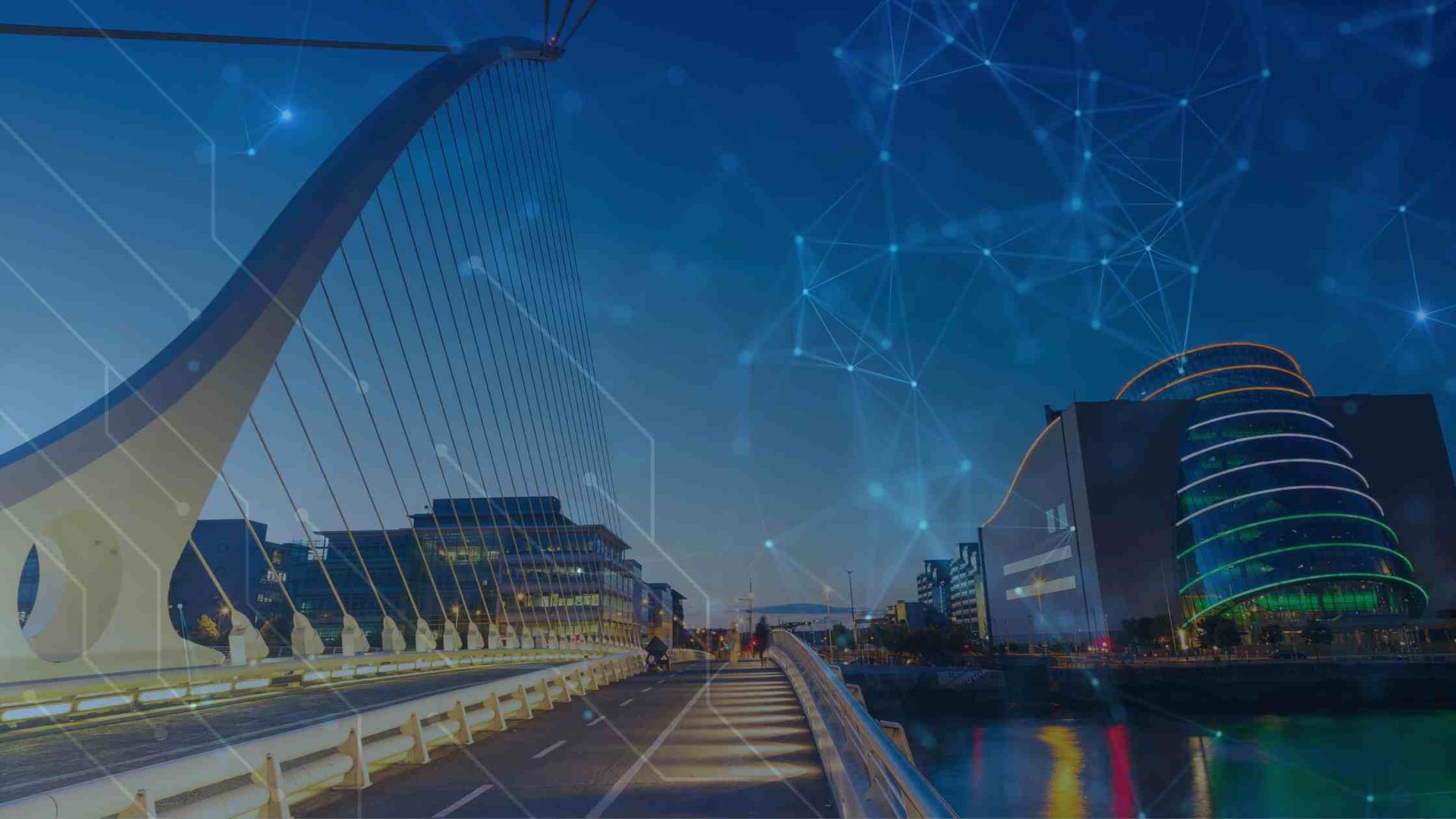Creating an Inclusive Culture: Ken Bowles, Smurfit Kappa Group
Ken Bowles is the CFO of Smurfit Kappa Group, a FTSE 100 global organisation that makes paper based packaging solutions that are renewable, recyclable and biodegradable. Smurfit Kappa Group operates across 35 countries and have 46,000 employees. Ken is an accountant by training but spends a lot of time on the people side of the organisation.
Ken gives an account of with I&D means to the Smurfit Kappa Group and advice on how an organisation can promote an inclusive culture.
Why is diversity and inclusion important within an organisation?
Inclusion, Diversity and let’s not forget… “Belonging’’ is really important in organisations. To be a successful organisation, we as leaders need to ensure we build diverse teams at every level that can thrive, leverage each other’s differences and work together even better as a result of those differences.
In today’s competitive environment, to attract, retain and get the best from your talent every day, it is not just about creating a dynamic physical workplace for the future; it’s about ensuring that, everyone still feels ‘at home’ in that organisation and valued as a unique individual. Bringing their true selves to work every day.
At SKG, this is why we have expanded into exploring more about employee ‘Belonging’ to our Inclusion and Diversity focus. This is critical for the future of Smurfit Kappa as we strive to build a diverse workforce, which is vital for creating an inclusive environment where everyone feels empowered to participate, contribute their ideas and reach their full potential.
We believe that Inclusion, Diversity and Belonging will lead to even more innovation, more opportunities for everyone, better access to talent, better understanding of our customers and overall better business performance. It doesn’t and shouldn’t really matter what your age, gender, colour, creed or sexuality is. Organisations should want you to feel that you are part of something bigger and that your opinion is welcomed and valued no matter what.
How can an organisation promote an inclusive culture?
It starts firstly with the leadership tone and values that are set from the top and then cascaded down through an organisation. Every person within that system is responsible for inclusion and creating inclusion by the way…not just leaders and managers. There are many ways that organisations can promote this, some examples we used at SKG are:
- Our culture, which is based on the simple principles of Loyalty, Integrity & Respect
every day
- Make this a priority and a value, and talk about it
- For our part, we constantly
. Understand
? For example, we now know we have significant work to do on our male/female gender ratio’s, but this work is underway and we are beginning to move the dial.
- Our work on Inclusion, Diversity and Belonging
through to the facilities we provide, particularly at our more manufacturing orientated sites; to our
We also run a programme of events that are specifically aimed at educating and celebrating gender balance and equality.
What is an organisation’s culture?
There are lots of definitions around organisational culture, which you can read in
many papers written by people who are experts in the area. However, for me culture is a very simple thing, it is how we are, how we act, how we behave and how we respect each other (or not). In other words, it’s how an organisation shows up for work every day and goes about its business. We all know, this can be good or bad.
For me, it is the culmination of all of these things, linked to our priorities and values, which supports our employees in how they work. Culture can play a role in shifting the diversity needle and forming truly inclusive environments too.
I ask employees to tell me what they see, feel and hear…that’s how I get a pulse on Organisational culture because it’s not about words, it’s about actions, it’s about feelings and it’s about behaviours…particularly when no one is looking!
How can a leadership team ensure a commitment to diversifying their workforce?
Commitment to a diversified workforce is best led from the top, but empowering locally and again setting organisational expectations and metrics.
Leaders should truly value a diverse mix of people, who bring so much in terms of leadership, culture, perspective and innovative thinking to an organisation.
Development of an I&D Strategy around HOW you will diversify your organisation, it won’t just happen by chance, for example, In 2018, we launched our SK Global Inclusion & Diversity Programme ‘EveryOne’, to enable and focus our commitment on this crucial agenda item. We established and communicated right across the entire organisation of 46,000 colleagues HOW we would diversify our organisation through 9 core commitments such as; Focus on all forms of Diversity (beyond gender), L&D as a real business opportunity, not just a nice thing to do, development of metrics to track and report progression in diversity, developed and rolled out an SK managers awareness training programme, and joined the diversity pledge from the ERT – European Round Table.
How can an organisation improve its D&I hiring strategy?
Review and re-write all key job specifications where possible, and core people policies to ensure they are 100% inclusive. Be conscious of, and remove bias. Try to have an enhanced focus on one’s abilities, not disabilities – ‘’if you have the skills to work with us, we will do what is necessary to make that happen”.
However, primarily it is about the desire to change. Ensuring for all jobs advertised, especially those who are dominated by male candidates, that we push the recruitment process to ensure we get a more diverse selection of applicants. Briefing your external recruiters to bring back short listed candidates of mixed diversity, and ensuring that hiring decisions are made by multi-cultural and all gender panels.
What do you think are the biggest obstacles that an organisation may face when implementing a D&I strategy? Do you have any examples?
I truly believe that organisations are so well-intended and have such positive commitments towards creating change in today’s world, however, may not know how or even where to start. This can be one of the biggest hurdles. In addition, sectoral differences can be a key factor for consideration – many industries may be traditionally male-orientated based on very physical labour requirements, e.g. manufacturing sector, Chemical Engineering…
Across many areas of our organisation, due to the manufacturing and manual nature of our business and the roles we have available, we have also had a very male-dominated employee base, however, we are actively committed to addressing this and have already taken steps to improve. In some of our rural mills, it has been as basic as adding female changing facilities and supporting young female engineering and science graduates, in order to attract more female mill workers. It has meant re-looking at our recruitment strategy to ensure the roles are seen by a wider audience and using tools such as social media and LinkedIn to build our employer brand to widen our net further.
What efforts has your organisation implemented over the years to promote a more inclusive culture?
Our Inclusion, Diversity and Belonging programme is in its early stages, but it is more than something we just want to check off a list. It is a continuous journey, which is now part of everything we do, every day.
- We have 9 core commitments in place since 2018 to deliver on our I&D plans
- We are partners of the 30% Club – promoting gender equality
- We are partners of the TCPID – Trinity Centre People with Intellectual disabilities
- We have an I&D scorecard with real metrics that we use to hold businesses and leaders accountable to drive change and make progress
- I personally have I&D KPI’s on my scorecard as the Group CFO and a Board Member to make YOY improvements
- We have Diversity & Inclusion Awareness training for managers
- We have a full ‘Everyone’ branded campaign to demonstrate our desire for change
- We conduct employee engagement surveys and measure how our 46,000 employees feel about working in SKG
- We have improved our recruitment processes
- We encourage team working across our organisation
- Each quarter we celebrate core differences, for example in first-quarter we celebrate gender diversity through International women’s day, in second-quarter we celebrate LGBTQ+ and support Pride in June, in quarter 3 we support mental health and work-life balance initiatives/programmes and in last quarter we celebrate disability in the workplace – we just hired our first graduate from TCPID.
How does a lack of a D&I strategy effect employees individually? What effects does it have on office culture?
Whether your team members are part of the LGBTQ community, belong to minority groups due to their gender or ethnicity, or are significantly older or younger than the majority in the office, it is just as important for them to be included and accepted in the day-to-day workplace for their personal successes and that of the organisation.
When this works, it makes the workplace a more dynamic, inclusive and innovative space. People feel valued and part of the team, leading to a much more harmonious office culture, where people are not just tolerant of the differences various people bring, but are totally accepting to the point, where difference is no longer an issue but is totally embraced.
It can lead to greater levels of employee engagement, as a strong diversity and inclusion approach can instil a passion that’s contagious and shared throughout the company. It can bring confidence as it can bring a larger platform for innovation, creativity and a variety of perspectives that will leave your employees feeling like they are in a safe place to be themselves and produce their best work.
It can also help with attracting the best talent. Our Inclusion, Diversity and Belonging strategy is aimed at building our people from the inside out. A higher calibre of professionals will want to join a company that strives to provide a comfortable, supportive, and inspiring atmosphere where people of different ethnicities, genders and sexual orientations can flourish.
Ken Bowles joins us on the panel for our next WWMB D&I event on Thursday 5th March. Contact events@wwmb.ie to register your interest for free tickets.








































































































